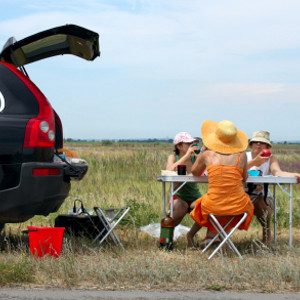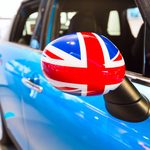Diabetes in the Driver’s Seat
A quick guide to ensuring your safety on the roadway, as well as protecting other motorists. In this article you will find helpful tips to stay on top of your blood sugar, as well as some recommendations to make the trip more pleasant itself.

Fill your day bag with nourishment.
Before you leave the house for that day trip to the zoo, fill a plastic drinking cup with sliced carrots and other vegetables, or wholemeal pita slices. Put some low-fat dip or hummus in another cup. That way, you will have plenty of nourishing snacks to keep you going throughout the day.
For longer trips, buy a medium-sized cool bag and pack it with healthy snacks.
Junk food is doubly tempting when you’re travelling by car: you’re confined in a small space without much to do, and every time you stop for petrol you keep thinking about how good a bag of salty chips and a cold soft drink would be. Having the right kind of cool bag and stocking it well can save you thousands of kilojoules and hundreds of fat grams, not to mention money. Find one that fits easily behind the passenger seat of your car. Fill it with bottled water, carrot sticks, sliced red capsicums, fruit, low-fat cheese slices and containers of low-fat dip, yogurt or hummus. Cover with an ice pack and put wholemeal crackers in zip-lock bags on top.
Arm yourself with sandwiches.
Your cooler can save you from more than the petrol-station shop – it can also protect you from those ubiquitous fast-food outlets and the crowds who flock there. Before you go, fill pita bread with lean ham and sun-dried tomatoes plus a little spicy mustard, or make yourself a delicious wrap with grilled chicken breast, spinach leaves and sliced red onion topped with salsa and lowfat sour cream in a wholemeal flour tortilla.
Bring along an audiobook.
Reading can make long journeys pass quickly, but many bookworms in the passenger seats get travel sickness, and reading is obviously not an option for the driver. Before you leave for your trip, visit your bookshop or local library and buy or borrow some audiobooks, or go online. You’ll find plenty of thrillers, romances, biographies and humorous books to enrich your drive. If you’re web-savvy, you can download e-books to your iPod or MP3 player. These handy devices can hold a shelf’s worth of books, and you can connect the player to your car’s stereo.
Keep low blood glucose from becoming a highway hazard.
Having low blood glucose while you’re driving can endanger you and other motorists. If you ever feel the symptoms (such as dizziness, sweating, shakiness and confusion) while you’re behind the wheel, pull over as soon as you safely can, take the keys out of the ignition and move into a passenger seat. Check your blood glucose and, if it’s low, consume a sweet drink or glucose tablets. Follow up with a snack containing carbohydrate such as a sandwich. Wait 15 minutes and check your blood glucose again. Resume driving only when your blood glucose level is within the normal range.
Seek medical advice on driving safely.
Diabetes-related problems can affect your driving ability, namely, blurry vision or nerve damage to your feet that makes it difficult to use the accelerator and brake pedals. If this happens, you should discuss the situation with your health professionals, who will work with you to ensure you are driving safely. If you are on tablets or insulin treatment, you will have to complete a yearly medical examination with your doctor to confirm you are fit to drive.



